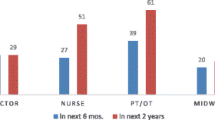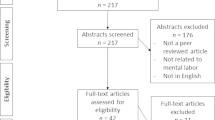Abstract
Taking unjust and unlawful benefits of children’s labour for someone’s gain or gratification can be termed as economic exploitations in child labour. The study aimed to explore the prevalence of economic exploitations and their determinants among child labourers (CLs). Lalbagh, Hazaribagh, and Kamrangirchar sub-districts of Dhaka district were rationally chosen as the areas of the study. The study adopted a mixed-method design, where a proportional probability sampling was used. A list of 1753 CLs comprising 543, 587 and 626 from the selected study areas was prepared through a short enumeration survey and 324 CLs were interviewed systematically from the list to collect quantitative data using a face-to-face structured interview schedule. The study also collected qualitative data through 15 in-depth case interviews (five from each sub-district). Multivariate logistic regression was employed to determine the associated factors with the economic exploitations. Thematic analysis was followed, and then a concurrent technique was employed for data analysis. Results showed that 97% of the CLs were economically exploited. The multivariate logistic regression analysis identified that the socio-economic and occupational factors were significantly associated with these economic exploitations in different variables used in the study. On the other hand, the qualitative findings showed that the CLs were physically and verbally abused, engaged long working hours with less than minimum wage, involved in various hazardous jobs while hardly received treatment costs due to occupational injury. Finding would be an important guideline for the governmental and non-governmental organizations, policymakers, human rights workers and development practitioners in the related field.

Source: Developed by authors

Similar content being viewed by others
Data Availability
Data will be shared upon request.
References
Abusaleh, K., & Islam, M. R. (2019). Traditional practices of Panchayat system among ex-enclave dwellers in Bangladesh. GeoJournal, 84(3), 657–669.
Ahmed, S., & Ray, R. (2014). Health consequences of child labour in Bangladesh. Demographic Research, 30, 111–150.
Ahsan, T. (2011). The status of un-served children in education: Working children in Bangladesh. Campaign for Popular Education (CAMPE).
Aktar, S., & Abdullah, S. M. (2013). Protecting child labour in Bangladesh: Domestic laws versus international instruments. Bangladesh e-Journal of Sociology, 10(1), 153–172.
Amon, J. J., Buchanan, J., Cohen, J., & Kippenberg, J. (2012). Child labour and environmental health: Government obligations and human rights. International Journal of Paediatrics, 2012, 1–8.
Bangladesh Bureau of Statistics (BBS). (2011). Population and housing census 2011. Statistics and Informatics Division, Ministry of Planning, Government of the People’s Republic of Bangladesh.
BBS. (2015). Child labour survey Bangladesh 2013, Bangladesh Bureau of Statistics, Statistics and Informatics Division, Ministry of Planning, Government of the People’s Republic of Bangladesh.
BBS. (2019). The household income and expenditure survey 2016, Statistics and Informatics Division, Ministry of Planning, Government of the People’s Republic of Bangladesh.
Blanco, F., & Valdivia, C. A. (2006). Child labour in Venezuela: children’s vulnerability to macroeconomic shocks. Understanding Children’s Work Discussion Paper.
Caleo, G., Dada, M., Gray, N., Sangma, M., Scoizzato, L., Bangs, G. W., & Baset, K. U. (2018). Assessing the feasibility of preventing injury risks and improving work safety amongst factory workers in an urban slum: a participatory before-and-after intervention study, Medecins Sans Frontiers.
Chatterjee, D. K. (Ed.). (2011). Encyclopedia of global justice: A-I. Springer Science & Business Media.
Das, S., & Mukherjee, D. (2007). Role of women in schooling and child labour decision: The case of urban boys in India. Social Indicators Research, 82(3), 463–486.
Das, S., & Mukherjee, D. (2011). Measuring deprivation due to child work and child labour: A study for Indian children. Child Indicators Research, 4(3), 453–466.
Dhaka Tribune. (2016). Child Labour Still Rising, Available at: http://archive.dhakatribune.com/bangladesh/2016/jan/19/child-labour-still-rising. Accessed on 13 June 2020.
ErdemTürkelli, G. (2019). Eradicating child labor: Ending economic exploitation of children as an objective of sustainable development. In Filho W. Leal, A. Azul, L. Brandli, P. Özuyar, & T. Wall (Eds.), Decent work and economic growth. Encyclopedia of the UN sustainable development goals. Springer. https://doi.org/10.1007/978-3-319-71058-7_3-2
Fetuga, B. M., Njokama, F. O., & Olowu, A. O. (2005). Prevalence, types and demographic features of child labour among school children in Nigeria. BMC International Health and Human Rights, 5(1), 1–7.
French, J. L. (2010). Children’s labour market involvement, household work, and welfare: A Brazilian case study. Journal of Business Ethics, 92(1), 63–78.
Haque, M. I., Chowdhury, A. A., Hassan, M. S., Khan, H. T. A., & Harun, M. G. D. (2019). Prevailing familial, social and cultural obstacles in keeping tobacco free homes in urban areas of Bangladesh: A mixed method study. PLoS ONE, 14(8), e0220777.
Haque, M. I., Chowdhury, A. A., Shahjahan, M., & Harun, M. G. D. (2018). Traditional healing practices in rural Bangladesh: A qualitative investigation. BMC Complementary and Alternative Medicine, 18(62), 1–15.
Haque, M. I., Ullah, A. N. Z., Akter, T., Chowdhury, A. A., Al Mamun, A., Tamanna, T. I., & Harun, M. G. D. (2020). Familial and socio-cultural barriers in maintaining tobacco-free homes in Bangladesh: A comparative cross-sectional study. BMJ open, 10(12), e039787.
Huisman, J., & Smits, J. (2015). Keeping children in school: Effects of household and context characteristics on school dropout in 363 districts of 30 developing countries. SAGE Open, I5(4), 2158244015609666.
ILO. (2006). The end of child labour: Within reach. Global Report under the Follow-up to the ILO Declaration on Fundamental Principles and Rights at Work.
ILO. (2009). Give girls a chance: Tackling child labour, a key to the future. International Labour Office.
ILO. (2013). World report on child labour: Economic vulnerability, social protection and the flight against child labour. International Labour Organization.
ILO. (2017). Global estimates of child labour: Results and trends, International Labour Organization, 2012–2016.
IREWOC. (2010). The worst forms of child labour in Asia, main findings from Bangladesh and Nepal. Plan Netherlands.
Islam, B. E., Mahmud, K., & Rahman, N. (2014). Situation of child domestic workers in Bangladesh. Global Journal of Management and Business Research, 13(7), 25–34.
Islam, M. R. (2010). The situation of domestic child labourers in Dhaka city. Bangladesh Shishu Adhikar Forum.
Islam, M. R. (2017). Population shifting and risks of street children in Asia: Possible social work interventions. Global Social Welfare, 4(3), 149–157.
Kamruzzaman, M. (2015). Child victimization at working places in Bangladesh. American Journal of Applied Psychology, 4(6), 146–159.
Karim, A. Z., Islam, M. Z. A., & Farrukh, M. O. (2004). Baseline surveys on child labour situation in bidi industry in Kushtia, Tangail, and Rangpur districts. International Labour Office.
Khanam, R. (2005). Child labour in Bangladesh: Trends, patterns and policy options. Asian Profile, 34(6), 593–608.
Kim, J., Olsen, W., & Wiśniowski, A. (2020). A Bayesian estimation of child labour in India. Child Indicators Research, 13(6), 1975–2001.
Labour Act. (2006). The Bangladesh labour cct (XLII of 2006). Dhaka: Government of the People’s Republic of Bangladesh. Available at https://www.dpp.gov.bd/upload_file/gazettes/14212_75510.pdf. Accessed on 07 June 2021.
Mahmod, N. A. K. N., Salleh, M. C. M., Muhammad, A. A., & Mohd, A. (2016). A study on child labour as a form of child abuse in Malaysia. International Journal of Social Science and Humanity, 6(7), 525–530.
Majumdar, M. (2001). Child labour as a human security problem: Evidence from India. Oxford Development Studies, 29(3), 279–304.
Mohajan, H. (2014). Child rights in Bangladesh. Journal of Social Welfare and Human Rights, 02(01), 207–238.
Mohapatra, S., & Dash, B. (2011). Child labour- a product of socio-economic problem for India, findings and preventives-a case of Bhubabaneswar (A State Capital of India). Educational Research, 2(6), 1199–1209.
Murray, D. F., Theminimulle, S., & Sadat, F. A. (2019). Study on modern slavery in Bangladesh. Development Alternatives Incorporated (DAI).
NCLEP. (2010). National child labour elimination policy 2010, Ministry of Labour and Employment Government of the People’s Republic of Bangladesh. Available at https://rb.gy/qpdwko. Accessed on 07 June 2021.
Norpoth, J., Groß, L., & Aktar, R. (2014). Child labour in Bangladesh-an analysis of gaps and weaknesses of the existing legal framework. Institute of Development Research and Development Policy.
Pinilla-Roncancio, M., & Silva, R. (2018). Children in Angola: Poverty, deprivation and child labour. Child Indicators Research, 11(3), 981–1005.
Pinzon-Rondon, A. M., Botero, J. C., Benson, L., Briceno-Ayala, L., & Kanamori, M. (2010). Workplace abuse and economic exploitation of children working in the streets of Latin American cities. International Journal of Occupational and Environmental Health, 16(2), 150–157.
Population and Housing Census (2011). Population and housing Census 2011. Dhaka: Bangladesh Bureau of Statistics (BBA).
Quattri, M., & Watkins, K. (2016). Child labour and education: A survey of slum settlements in Dhaka. Overseas Development Institute.
Rahman, M. N., Mistry, S. K., & Hossain, M. I. (2014). Nutritional status of child labourers in Dhaka city of Bangladesh: Findings from a cross sectional study. Bangladesh Journal of Child Health, 38(3), 130–136.
Ray, R. (2004). Child labour: A survey of selected Asian countries. Asian-Pacific Economic Literature, 18(2), 1–18.
Salmon, C. (2005). Child labour in Bangladesh: Are children the last economic resource of the household? Journal of Developing Societies, 21(1–2), 33–54.
Save the Children. (2020). Economic exploitation. Save the Children’s Resource Centre, Available at https://resourcecentre.savethechildren.net/keyword/economic-exploitation. Accessed on 13 March 2021.
Sheikh, M. M. R., & Prodhan, N. (2013). The socio-economic deprivation of the child labourer: Bangladesh perspective. Journal of International Social Issues, 01(1), 45–59.
Smith, J. P. (1999). Healthy bodies and thick wallets: the dual relation between health and economic status. Journal of Economic Perspectives, 13(2), 145–166.
The Financial Express. (2020). The challenge of eliminating child labour. Available at https://www.thefinancialexpress.com.bd/views/the-challenge-of-eliminating-child-labour-1591974939. Accessed on 04 June 2021.
UNICEF. (2009). A study on violence against girls. Report on the International Child Conference, The Hague, Netherlands.
UNICEF. (2014). Child labour and UNICEF in action. UNICEF.
US Department of Labour. (2017). Bangladesh made a moderate achievement, 2017 findings on the worst forms of child labour. Bureau of International Affairs.
Van Der Hof, S., Lievens, E., Milkaite, I., Verdoodt, V., Hannema, T., & Liefaard, T. (2020). The child’s right to protection against economic exploitation in the digital world. The International Journal of Children’s Rights, 28(4), 833–859.
Warren, P. (2011). Exploitation. In D. K. Chatterjee (Ed.), Encyclopedia of global justice. Springer. https://doi.org/10.1007/978-1-4020-9160-5_442
Webbink, E., Smits, J., & de Jong, E. (2013). Household and context determinants of child labour in 221 districts of 18 developing countries. Social Indicators Research, 110(2), 819–836.
Zaman, S., Matin, S., & Kibria, A. M. B. G. (2014). A study on present scenario of child labour in Bangladesh. IOSR Journal of Business and Management, 16(6), 25–36.
Acknowledgements
The authors would acknowledge three anonymous reviewers for their valuable comments and suggestions. The authors also acknowledge all of the child labourers who participated in the study.
Author information
Authors and Affiliations
Contributions
All authors except the second author were involved in study design, data analysis, data interpretation, literature search and writing the paper and had final approval of the submitted and published versions. The second author has revised the full paper according to both reviewers’ comments. He has reviewed a substantial amount of literature for the conceptual framework, methodology and discussion section. He has done the language editing of the paper. None of the authors has any competing interests in the manuscript.
Corresponding author
Ethics declarations
Conflict of Interest
The authors declare no conflict of interest.
Ethical Approval
There is no ethical body in Bangladesh. However, the informed consent was taken from the children, parents/guardians and owners of the.
Additional information
Publisher's Note
Springer Nature remains neutral with regard to jurisdictional claims in published maps and institutional affiliations.
Rights and permissions
About this article
Cite this article
Abusaleh, K., Islam, M.R., Ali, M.M. et al. Prevalence of Economic Exploitations and Their Determinants Among Child Labourers in Dhaka City, Bangladesh: A Mixed-Method Study. Child Ind Res 15, 87–106 (2022). https://doi.org/10.1007/s12187-021-09862-9
Accepted:
Published:
Issue Date:
DOI: https://doi.org/10.1007/s12187-021-09862-9




